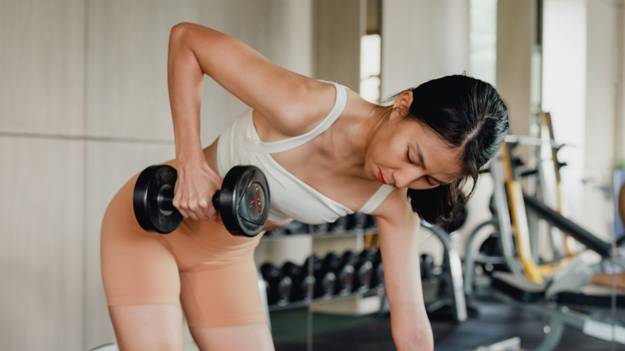Before engaging in any form of exercise after an arm injury, it’s essential to consult with a healthcare professional or physical therapist. They can provide specific guidelines based on the nature and severity of your injury. A tailored exercise plan can prevent further damage while promoting healing.
Modify Exercises to Avoid Strain
If your injury affects your upper body, focus on lower-body exercises such as squats, lunges, and leg presses, which do not involve the injured arm. If possible, engage in exercises that do not require gripping or lifting with the injured arm. Consider seated workouts that reduce pressure on your arm, such as using a stationary bike or performing leg stretches.
Incorporate Gentle Movements
Once cleared by your healthcare provider, begin incorporating gentle range-of-motion exercises to maintain flexibility in your arm. Simple movements such as wrist rotations, shoulder shrugs, and light stretches can help prevent stiffness and promote circulation without overexertion.
Unilateral Training
When you have an arm injury, training the uninjured arm can be beneficial. Research shows that working out the unaffected limb can still stimulate neurological and muscular responses in the injured arm, helping maintain strength and prevent muscle atrophy during recovery. Use lighter weights or resistance bands for controlled exercises.
Use Supportive Gear
Wearing braces or compression sleeves can provide extra support for your injured arm during exercise, helping to reduce pain and prevent further strain. These supports can stabilize the muscles and joints, particularly if you’re performing exercises that involve minimal arm movement.
Listen to Your Body
Avoid exercises that cause pain or discomfort in the injured area. Pay attention to your body’s signals—if you experience sharp or persistent pain, stop the activity immediately. Always modify the range of motion if needed to prevent aggravating the injury.
Focus on Core and Lower Body
While your arm is healing, it’s an excellent time to focus on strengthening your core and lower body. Core exercises like planks, bridges, and leg lifts can be performed without involving the injured arm. Incorporating exercises such as lunges, squats, and resistance band exercises will help maintain overall fitness.
Keep Up Cardiovascular Fitness
Maintaining cardiovascular health is essential, even when you’re recovering from an injury. Low-impact exercises such as walking, using a recumbent bike, or swimming (once you’re cleared for water activities) can keep your heart rate up without involving the injured arm. Always ensure that your activities do not place undue strain on the arm.
Frequently Asked Questions
How long should I wait before exercising after an arm injury?
The timeline for returning to exercise varies based on the severity of your injury. Consult your healthcare provider for guidance, as mild injuries may allow you to start light activities within a few days, while more severe injuries might require several weeks or even months of rest.
Can I lift weights with an arm injury?
It’s generally recommended to avoid lifting weights with the injured arm until it has sufficiently healed. However, you can focus on lower-body exercises or use your uninjured arm for unilateral training. Always use lighter weights and controlled movements to prevent additional strain.
Are there any specific exercises I should avoid?
Yes, avoid exercises that involve lifting, gripping, or placing weight on the injured arm, such as push-ups, pull-ups, or heavy lifting. High-impact activities that may jar the arm, such as running or contact sports, should also be avoided until you’re fully healed.
What are some good exercises to do while recovering from an arm injury?
Safe exercises for arm injury recovery include lower-body workouts like leg presses, lunges, and squats. Core exercises like planks and leg raises can also be done without straining the injured arm. Additionally, you can incorporate gentle stretching and range-of-motion exercises to maintain flexibility in the arm.
How can I speed up my recovery while staying active?
Focus on gentle movements, maintain cardiovascular health with low-impact activities, and keep up core and leg strength exercises. Proper nutrition, hydration, and adequate rest are also key components of recovery. Always follow the advice of your healthcare provider to avoid setbacks.
Conclusion
Exercising with an arm injury requires modifications to ensure safety and avoid aggravating the injury. By consulting with healthcare professionals, incorporating safe exercises, and focusing on other parts of the body, you can stay active while your arm heals. Listen to your body, avoid painful movements, and take the time needed for a complete recovery.





